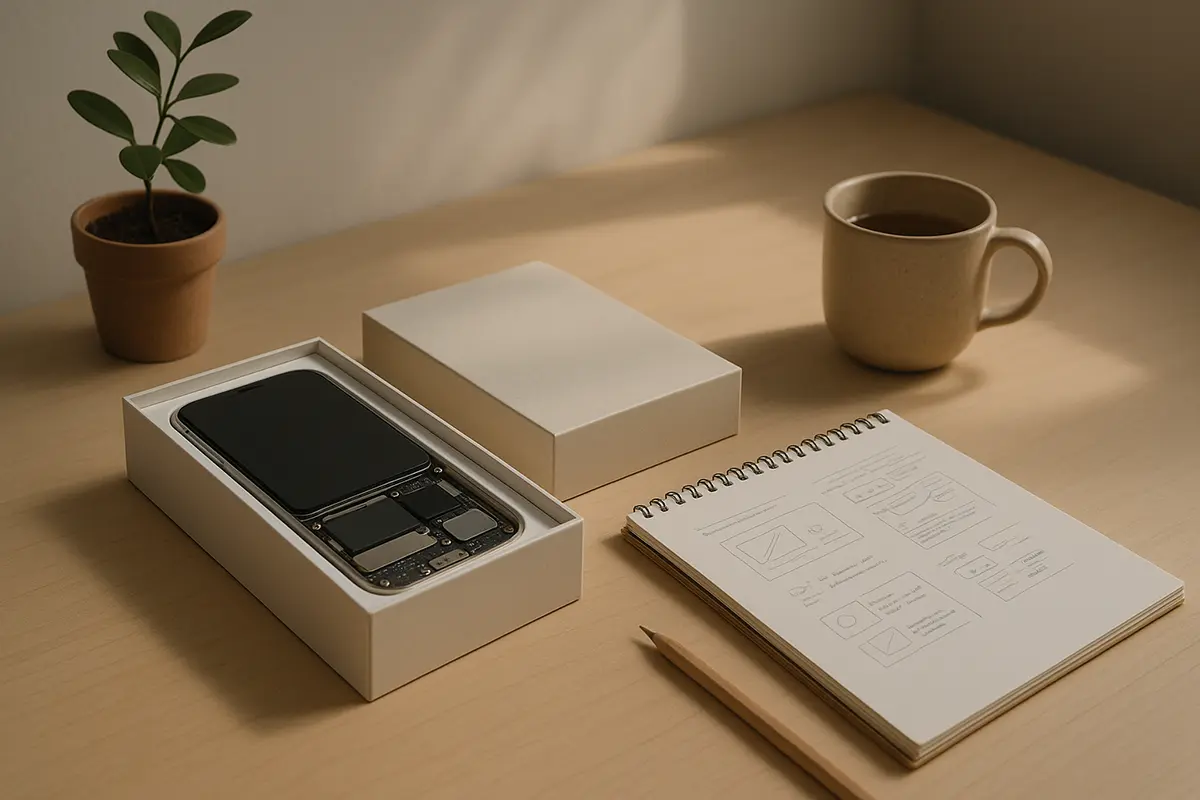In a world increasingly driven by speed, scale, and data, Sir Jony Ive, perhaps the most influential designer of the modern era, reminds us of a quieter truth: great design is an act of care.
In a rare and thoughtful conversation, the former Chief Design Officer at Apple offered more than reflections on product aesthetics or minimalist form.
Jony articulated a philosophy that reaches beyond function and into the soul of design: a commitment to values, clarity of purpose, and the people we design for.
“I believe that what we make stands as a testament to who we are,” he said. “It describes our values. It describes our preoccupations.” For Ive, design is never neutral; it’s a declaration of intent. Every element, down to the curve of a cable tab inside a product box, can tell someone: “You were considered.”
Care is the Competitive Edge
This radical attention to detail isn’t just a trademark of his design process; it’s a model for how modern brands and creators might orient themselves in an age where empathy is often traded for efficiency. At Taesea, we see this as a defining opportunity for businesses that care to stand apart.
In Ive’s words, design should aim “to genuinely attempt to move the species on.” This might sound lofty, but it’s grounded in the user’s everyday experience. Elevating an interaction, even if seemingly insignificant, can shift how someone feels, thinks, and acts. It can build loyalty not through manipulation but through sincerity.
The Myth of Measurability
In today’s world, where branding is often mistaken for metrics and user experience is boiled down to dashboards, Ive offers a challenge. What if we took joy seriously? What if we stopped confusing simplicity with sterility and began embedding delight, humour, and humanity into our work again?
“It’s not about removing clutter,” he explained. “To me, simplicity is expressing the essence of something and its role in our lives.”
The Power of Joy and Humanity in Design
For creatives and marketers, the takeaway is clear: people can feel the difference between something made to hit a price point and something made with purpose. They sense care, and equally, they sense its absence.
Ive warns of a dangerous corporate lie: only what’s measurable matters. But we know better. Creativity doesn’t always announce itself in data points. It often begins as a fragile idea whispered in a room of noise. It needs trust, space, and patience, commodities in short supply in many business cultures.
From Function to Feeling
The reward, he argues, is worth it. “When you make something with love and care,” he said, “even though the people you’ve made it for don’t know your story when they use the product, it’s a way of expressing our gratitude to the species.”
This is the kind of design that builds more than products. It builds belief.
Creating Culture Within Creative Teams
Ive also shared a rare look into his rituals of creative collaboration: breakfasts made by team members, team sessions hosted in one another’s homes, and the intentional fostering of trust.
These weren’t gimmicks. They were acts of care that nurtured bold ideas and reinforced human connection. He suggests that a creative culture isn’t just about what you produce; it’s about how you make people feel while you’re producing it.
Designing for Each Other, Not Just the Market
Design teams that care for one another often extend that care outward. Making things for teammates, not just for users or shareholders, is a subtle but powerful way of ensuring empathy is embedded at every level.
As he described, this approach transforms the workplace from a production line into a shared studio. It becomes a place where ideas are handled respectfully and people with even more.
What Brands Can Learn from Craftsmanship
Another compelling thread was about what happens when nobody’s watching. Ive noted his obsession with finishing a product’s unseen parts the inside of a phone, the back of a drawer which are places most customers will never look.
But that, he suggests, is precisely the point.
“A mark of how evolved we are as people,” he said, “is what we do when no one sees.”
A Call to Purpose-Driven Practice
For those of us in branding, marketing, and design, perhaps the question to ask isn’t what’s cheapest, fastest, or easiest but instead: Will this make someone feel cared for?
Because in a marketplace full of noise, care is still the most powerful differentiator.






